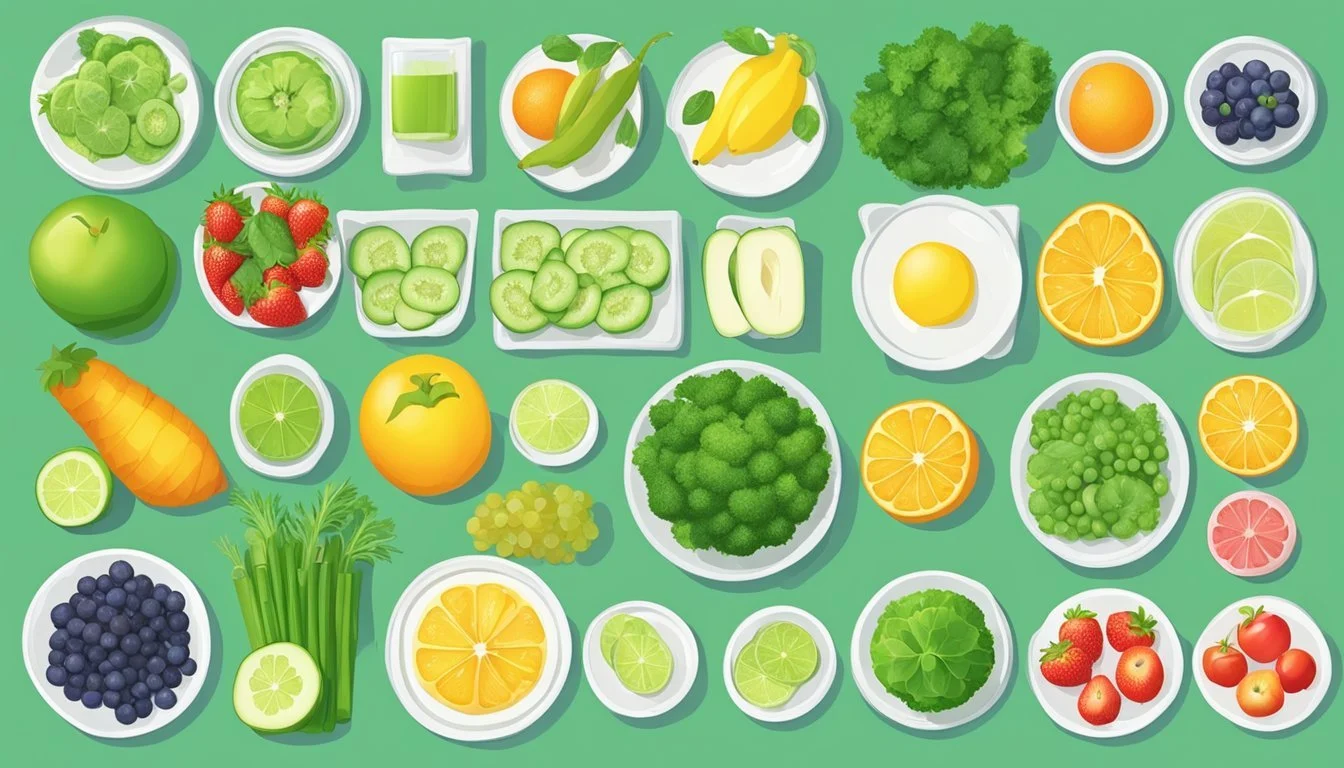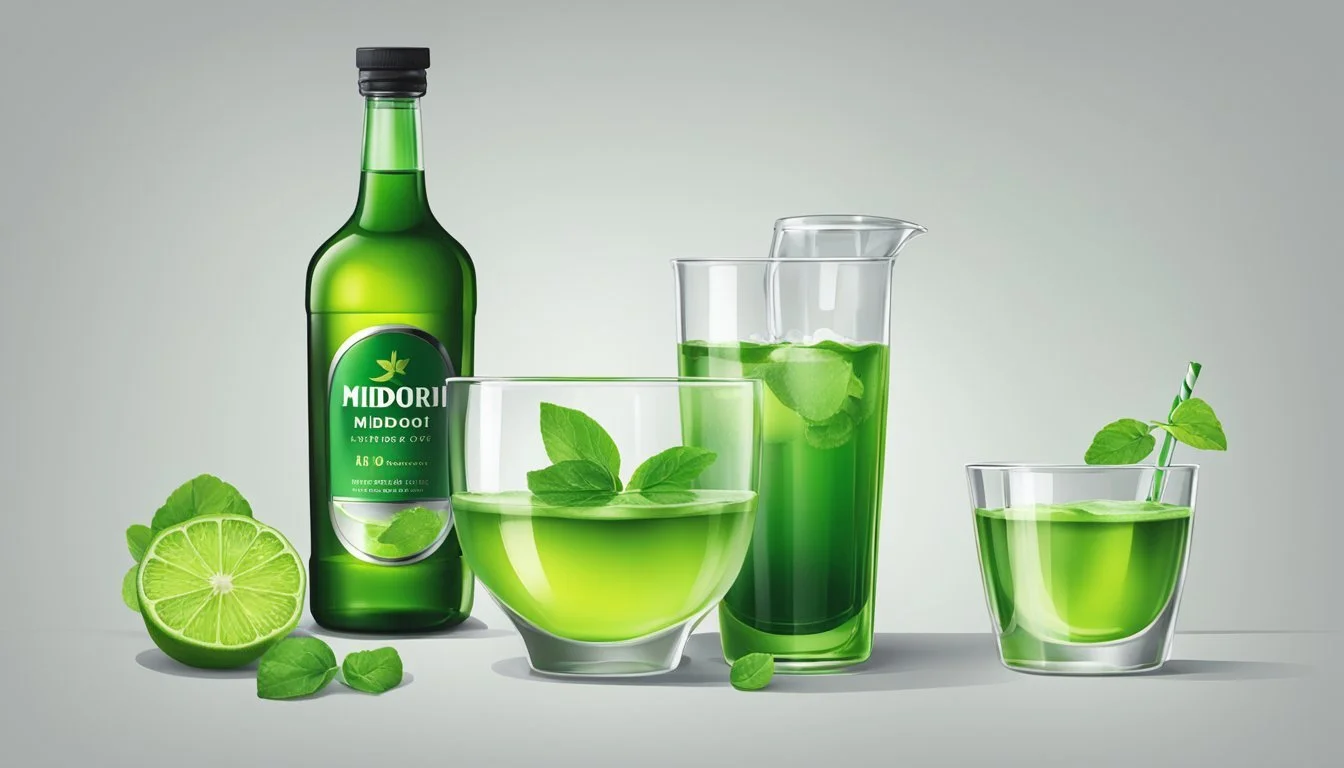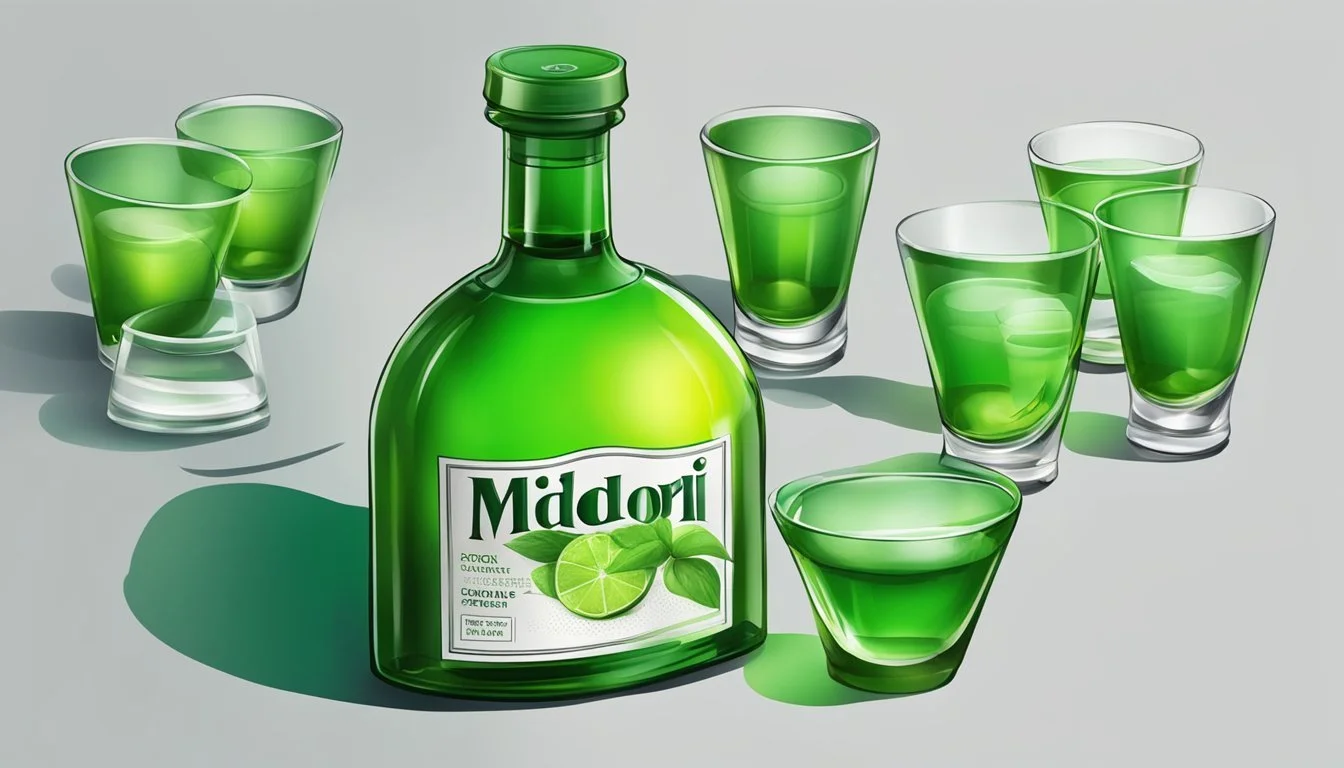How Many Servings of Midori Is Too Much
Expert Guidelines and Health Tips
Midori, with its vibrant green color and sweet melon flavor, is a popular choice among liqueurs. Made from neutral grain spirit, brandy, sugar, and Japanese melons, it adds a unique twist to cocktails and can easily be enjoyed on its own. The key to enjoying Midori responsibly is moderation, and for most adults, that means limiting intake to one or two servings per occasion.
Its appealing taste can sometimes lead to overconsumption, making it essential to be mindful of the alcohol content and its effects. A standard serving typically contains around 20-24% alcohol by volume, and while it may seem less potent compared to other spirits, it's easy to consume more than intended. Responsible drinking is vital to ensure a pleasant and safe experience.
Understanding Midori
Midori is a vibrant, honeydew melon-flavored liqueur that has captured the interest of many cocktail enthusiasts. Originating from Japan, it is notable for its striking green color and unique taste.
History of Midori Melon Liqueur
Midori was first introduced by Suntory in 1964 under the name Hermes Melon Liqueur. It was later rebranded to Midori, which means "green" in Japanese, when it was launched in the United States in 1978. This Japanese liqueur quickly gained popularity in the 1980s, becoming a staple in many cocktail recipes. Its distinctive flavor and eye-catching color helped it stand out in the crowded market of flavored liqueurs.
Midori's Flavor Profile
The flavor profile of Midori is primarily characterized by its honeydew melon essence. This fruity and sweet liqueur offers a smooth and refreshing taste, making it a popular choice for a variety of cocktails and mixed drinks. The bright green color not only makes it visually appealing but also adds a unique aesthetic to drinks. Given its sweetness, it is often paired with sour mix, citrus juices, or other spirits to balance the flavor.
Alcohol Content and Serving Size
Midori has an alcohol by volume (ABV) of 20%, which is relatively moderate compared to other liqueurs. This lower alcohol content makes it suitable for mixed drinks where the flavor of the liqueur can come through without overpowering other ingredients. Standard serving sizes for Midori generally range from 1 to 1.5 ounces per drink. Understanding its ABV is crucial for responsible consumption, as the sweet flavor can make it easy to overlook its alcoholic content. Proper storage of Midori involves keeping it in a cool, dry place, avoiding prolonged exposure to heat or sunlight.
By knowing the history, flavor, and alcohol content of Midori, consumers can appreciate its role in cocktails while also being mindful of their intake.
Health and Nutrition Aspects
When considering the consumption of Midori, it is essential to understand its caloric content, nutritional value, and potential allergens or dietary restrictions. This will aid in making informed choices about how much to drink in a day.
Caloric Content of Midori
Midori melon liqueur contains 79 to 90 calories per 1 oz shot. These calories are primarily derived from carbohydrates. Regular consumption can contribute to weight gain if not accounted for within one's daily caloric intake.
Midori's caloric content breaks down as follows:
Alcohol: A significant portion of the calories come from alcohol, roughly 48-50%.
Carbohydrates: The rest of the calories, about 50%, come from sugars.
Consuming multiple servings a day can quickly add up in calories, impacting a balanced diet.
Nutritional Value Overview
Midori has limited nutritional benefits. It provides 0g of protein, fat, and essential vitamins or minerals. It mainly consists of carbohydrates, particularly sugars, without significant fiber, vitamins, or other nutrients.
Key points include:
Sugars: Midori is high in sugar, around 11g per serving.
Absence of protein, fat, fiber: This lack contributes minimally to daily nutritional requirements.
No significant vitamins or minerals: Vitamins like C, B6, B9, and minerals such as potassium, calcium, magnesium are not present in meaningful amounts.
Allergens and Dietary Restrictions
Midori is generally gluten-free and vegan, making it suitable for individuals with gluten intolerance or those following a vegan diet. However, it should be noted that it does not provide any substantial nutritional benefits typical of whole foods.
Considerations:
Allergens: No common allergens are typically associated with Midori.
Dietary restrictions: Given its sugar content, it may not be ideal for those managing conditions like diabetes.
Alcohol content: As a liqueur, the alcohol content must be considered, especially for those with alcohol sensitivity or health conditions affected by alcohol.
Managing the number of servings is crucial to avoid excessive caloric and sugar intake, aligning consumption with a balanced diet.
Midori in Mixology
Midori, a vibrant green melon liqueur, is known for its sweet and fruity flavor. It is versatile in mixology, as it mixes well with various spirits and juices, creating colorful and refreshing cocktails.
Popular Midori Cocktails
Several cocktails feature Midori, taking advantage of its melon flavor and bright green color. Midori Sour is among the most popular, combining melon liqueur, lemon juice, lime juice, and a splash of club soda. It’s often garnished with a cherry or lemon slice.
Another favorite is the Midori Martini, which mixes Midori with vodka, lemonade, and simple syrup, usually served with a maraschino cherry. The Melon Ball is a classic, blending Midori with vodka and orange juice, typically garnished with an orange slice. These drinks showcase Midori’s ability to complement different mixers and spirits, creating unique and delicious cocktails.
Mixing with Midori
Mixing with Midori involves balancing its sweetness with other ingredients. Popular mixers include citrus juices like lemon and lime, which add a tart contrast. Lemon juice and lime juice are frequently used to offset Midori’s sweetness, providing a refreshing sourness.
Vodka, gin, rum, and tequila are common spirits paired with Midori, offering varied flavor profiles. For a tropical twist, pineapple juice and coconut cream can be used. To create layered drinks, bartenders often combine Midori with ingredients like blue curacao or grenadine for visual appeal.
Recipes for parties or large gatherings often involve batching, ensuring consistent flavor in every serving. Using the right garnish like a lemon slice, cherry, or mint sprig enhances the drink both visually and flavor-wise.
Responsible Consumption
Understanding how to consume Midori responsibly is crucial, especially due to its alcohol content and the potential health impacts. The following sections provide detailed guidelines on safe intake, the effects of overconsumption, and proper serving practices.
Determining a Safe Intake
Midori, a melon-flavored liqueur, typically has an ABV (alcohol by volume) of around 20%. Safe consumption largely hinges on serving sizes and individual tolerance.
The general guideline for alcohol intake recommends up to one standard drink per day for women and up to two for men. A standard drink of Midori is about 1.5 ounces, containing approximately 0.3 ounces of pure alcohol. This estimation helps individuals keep their intake within safe limits to prevent adverse effects.
Effects of Overconsumption
Overconsumption of Midori can lead to various health problems. Immediate effects can include impaired cognitive functions, reduced motor skills, and increased risk of accidents.
Over time, excessive Midori intake can contribute to weight gain and potentially lead to obesity due to its high sugar content and calories. Long-term overconsumption also raises the risk of developing chronic conditions such as liver disease, cardiovascular problems, and dependence.
Serving Guidelines and Moderation
Practicing moderation with Midori is essential for enjoying it responsibly. To adhere to guidelines, a serving size should be about 1.5 ounces. This amount can be consumed neat, over ice, or mixed into cocktails, ensuring you don't exceed daily recommendations.
Using measuring tools, such as jiggers, can help maintain proper serving sizes. It’s also helpful to space out drinks, alternately hydrating with water to reduce immediate intoxication and mitigate overconsumption. Following these practices ensures a balanced and enjoyable experience while prioritizing health.
Procuring Midori
Midori, the vibrant green melon liqueur, has its unique flavor derived from premium Japanese melons. Here, we will discuss where to buy it, its price range, and tips to select the best bottle from the liquor store shelf.
Availability and Price Range
Midori is widely available in many countries. You can find it in most large liquor stores that carry a variety of international spirits. Online retailers also stock Midori, making it convenient to purchase if it's not available locally.
In terms of price, Midori is typically a mid-priced liqueur. A standard 750ml bottle often costs between $20 to $30. Prices can vary depending on the retailer and location. Specialty liquor stores in major cities might offer it at a slightly higher price due to import duties and store overheads.
Selection Tips at the Liquor Store
When selecting Midori at a liquor store, look for a bottle with a vibrant neon green hue. Ensure the seal is intact, verifying product integrity.
Check for any discounts or deals, especially during festive seasons, as many stores offer promotions on spirits. Be aware of the pricing of different sizes; sometimes, the larger bottle offers better value per ounce.
It can also be beneficial to check the production date. While liqueurs like Midori have a long shelf life, fresher batches often have a more pronounced and vibrant flavor.
Culinary Creations
Midori is not just for cocktails; it can be a versatile addition to various culinary dishes, enhancing flavors with its unique sweetness and vibrant green color.
Cooking with Midori
Incorporating Midori in cooking can add a sophisticated twist to traditional recipes. The liqueur pairs well with fresh fruits like pineapple, lemon, and lime.
Different marinades and sauces benefit from its unique flavor profile. For instance, a Midori-glazed chicken can offer a sweet and tangy alternative to traditional recipes. Adding a splash to a stir-fry or salad dressing can lift the dish with its refreshing taste. Midori also complements seafood, providing a subtle sweetness to dishes like shrimp or scallop ceviche.
Desserts and Infusions
Midori is an excellent ingredient for various desserts and infusions. It can be used to create vibrant green sweets that enhance traditional flavors with a refreshing twist.
Midori-infused cakes, mousses, and sorbets are popular choices that impress with both flavor and appearance. Incorporating the liqueur into gelatin desserts adds a fun and colorful touch. For a more adventurous palate, chocolate-Midori truffles offer an intriguing blend of rich cocoa and the liqueur's fruity notes.
Using Midori in dessert cocktails or ice creams opens up exciting possibilities for special occasions. The use of this melon liqueur can transform simple recipes into standout dishes with its distinct green color and unique flavor.








